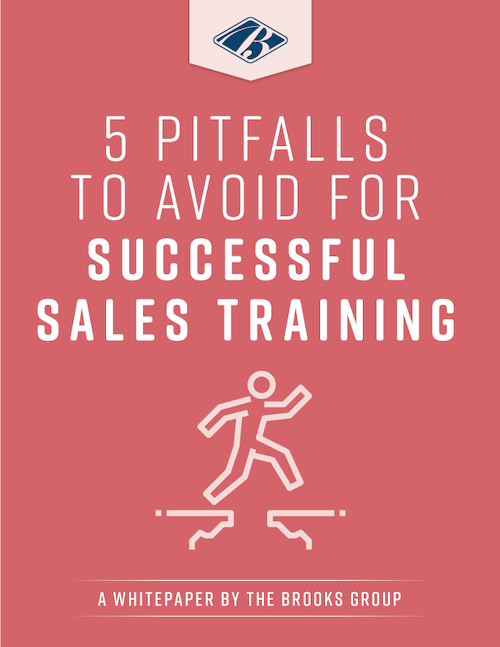There are many ways for things to just “happen, like magic,” with little or no effort. Take the Ouija board for example, which can reveal all with just a board and a pointy plastic device. Or the sleight of hand mysteries of magicians like Doug Henning, David Copperfield and Criss Angel, who have walked on water and made iconic landmarks appear and disappear. Heck, even the wave of a white-tipped black magic wand can often be enough to produce small items from thin air.
For the rest of us without a connection to the supernatural, it takes good old fashioned “doing” to attain our goals. In business, turning an investment into sales training into real, profitable results takes a dedicated combination of commitment, moxy – and a top-to-bottom organizational focus on reinforcing the training lessons for the win.
That doesn’t mean that your sales executive’s work is done with the signing of the check. It requires your leadership team to learn how to extract and build upon the key takeaways from training and use those details to fabricate and implement a plan for ongoing reinforcement.
Get it right, and it will be easy to see the impact in improved throughput, better quality lead generation activities – and more sales. Miss the mark, however, and you’ll often join the chorus of those who bemoan the process, stating that they “failed to see the benefit.”
So how can you best ensure your training investment is producing profitable sales activity – and how can you do it without the wave of a wand or by consulting the tea leaves? Here are three techniques our most successful clients here at The Brooks Group have employed.
Sales Management Training
We know your sales management leadership team is likely busy, and they may not think it’s worth the investment of time to onboard some of the same lessons your sales team is benefiting from. Nothing could be further from the truth. There are different ways that the sales management team can obtain training for themselves – they can audit the training sessions; commit to reviewing the provided coursework; or work through what I call a “building model” – a process that provides structure around guiding the leadership team into effectively implementing the training lessons.
Incidentally, this manner of leading by example tends to be one of my biggest strategies for ensuring a top-to-bottom commitment to post-training success. Aside from helping to ensure your sales management leaders are legitimate sources on the new sales strategies you’re implementing, it also assists with their vision and insights on the key players in your sales team. This can foster a better understanding of how to leverage your team’s strengths, while building upon their weaknesses.
Build in Some Opportunities to Follow-Up
It’s true that most sales professionals prefer hands-on learning – the chance to use real-world examples, simulations and modeling to test their techniques. We see it during our IMPACT Selling sales training sessions, and it makes sense: Most salespeople are going to prefer activities where they get to engage, because they are, by their nature, relationship driven.
Well, these hands-on lessons don’t need to stop after training concludes. In fact, I often recommend that during a sales organization’s mid-year or semi-annual sales meetings, it’s an excellent opportunity to bring in examples from the recent past for some more hands-on learning. These can either be facilitated refresher sessions, as with your original training, or led by a strong sales management within your organization who can be credible and take charge of the chance to reinforce key learnings. It will help you to visualize the progress your team has made since the original sales training sessions and identify areas for continued focus and improvement.
Accountability is Key
When your sales professionals graduate from sales training, they need to be looking beyond the post-training outline. It’s critical to ensure that all of your sales pros understand how to be accountable for executing the new strategies, and how to measure the results post-transformation. Though it’s normal to get bogged down with day-to-day tactical responsibilities, it doesn’t have to be difficult to make this a priority. For some people, it may be as simple as adding some Outlook reminders to follow-up on a specific aspect of their new sales process. For others – as an example, someone who took an assessment during training and found they scored low at closing the sale – it may require more of a commitment to reviewing and practicing the specific recommendations to help foster results.
Finally, make accountability a regular process. No one likes to work without feedback for an extended period – only to have their sins laid bare during the annual review. Check-ins, where you evaluate progress toward goals, should be built into weekly or monthly meetings with all team members.
If we can help you to maximize your sales training ROI beyond the classroom, please let us know. For more than 40 years, The Brooks Group has partnered with sales organizations around the globe—helping them to hire, train, coach, and develop salespeople and sales managers to reach maximum performance levels.
5 Pitfalls to Avoid for Successful Sales Training
All Sales Training Initiatives are not created equal! Maximize your ROI of training dollars and deliver training that actually gets results by avoiding the most common sales training mistakes. Learn how to gain buy-in for your sales training and boost engagement from your sales team.






